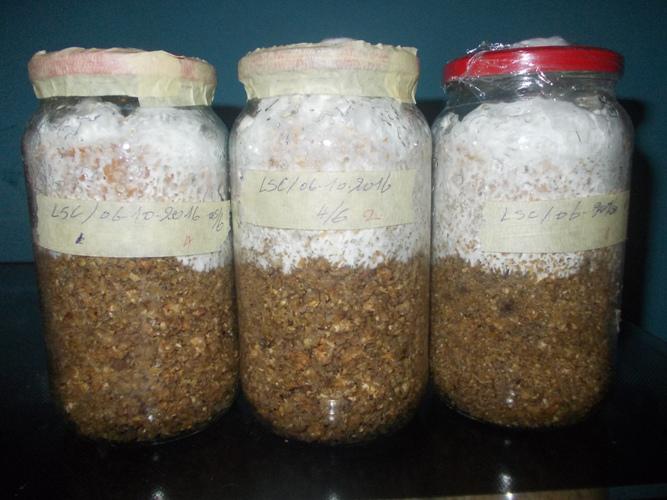Njouonkou André Ledoux
Other projects
13 Jul 2011
Study of the Diversity and the Ethno Mycology of Wild Edible Fungi in the Noun Division (Cameroon) for the Preservation of Natural Ecosystems
This project aims to trained Foumban sub-division farmers and youths in mushrooms cultivation and to implement nursing and planting of indigenous trees the areas.

Production of mushroom (Lentinus sajor-caju) spawn on corn cobs in mayonnaise bottles.
The Bamoun people in Cameroon use a large number of wild mushrooms species as food, medicine or source of incomes. They get these important organisms from savannas and bands of forest galleries that constitute the main ecosystems of their environment. Due to environmental disturbance, the availability of mushroom is reducing and the forest galleries that are the main source of wood are disappearing with many tree species. After being informed about the importance of mushrooms and conscious of the disappearance of the forest galleries of their area, locals of Foumban sub-division and vicinities asked to learn the cultivation of mushrooms and to initiate the planting of indigenous tree species in areas where forests have been destroyed. This RSG Booster grant is totally dedicated to support the above two demands.
Hence, during the coming two years, two main activities will be followed in the framework of this project: training of locals in mushrooms cultivation and planting of indigenous trees. Concerning the training of locals in mushroom cultivation, we are going to reinforce the capacity of farmers and youths in the production of mushrooms especially oyster mushrooms (Pleurotus spp.) from the production of spawn to that of mushroom fruit bodies. Waste domestic materials such as used mayonnaise bottles and agricultural waste available in the area (corn cobs, wood sawdust from carpenter workshops, coffee parchment wastes and rice husks) will be used. In parallel we are testing the production of some local edible species such Lentinus squarrosulus and L. sajor-caju on various substrates.
The planting of indigenous trees is a pilot project where only a few locally and widely used tree species will be involved. These include Khaya senegalensis (Dry-zone mahogany), Prunus africana (red stinkwood), Erythrophleum suaveolens (tali), Polyscias fulva (parasol tree) and some fruit trees. Seeds of these tree species will be collected from the remaining forest and nursed according to common methods of seedling production. At maturity (after 8 to 12 months), plantlets will be transported to areas such as degraded wood-land or forest galleries where planting will be done to enrich the remaining ecosystem.